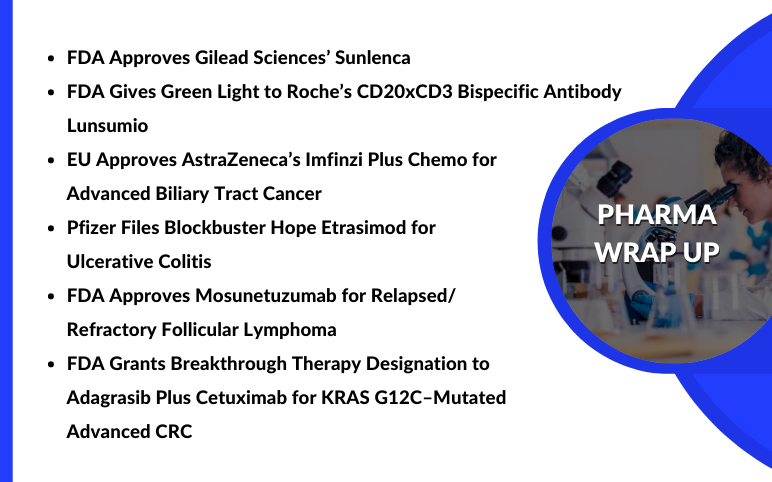
Notizia - Recent Pharma, Healthcare and Biotech Happenings
Gilead and Merck Announce Encouraging Phase II Results of Islatravir and Lenacapavir Combo; REGENXBIO Highlights Positive Data from Phase II ABBV-RGX-314 Wet AMD Study at AAO 2024; FDA Greenlights Astellas’ VYLOY for Advanced Gastric and GEJ Cancer Therapy; Merck’s CAPVAXIVE Vaccine Yields Strong Immune Response in Adults Vulnerable to Pneumococcal Disease; FDA Postpones LUMAKRAS Colorectal Cancer Verdict to Early 2025

Notizia - Recent Pharma, Healthcare and Biotech Happenings

